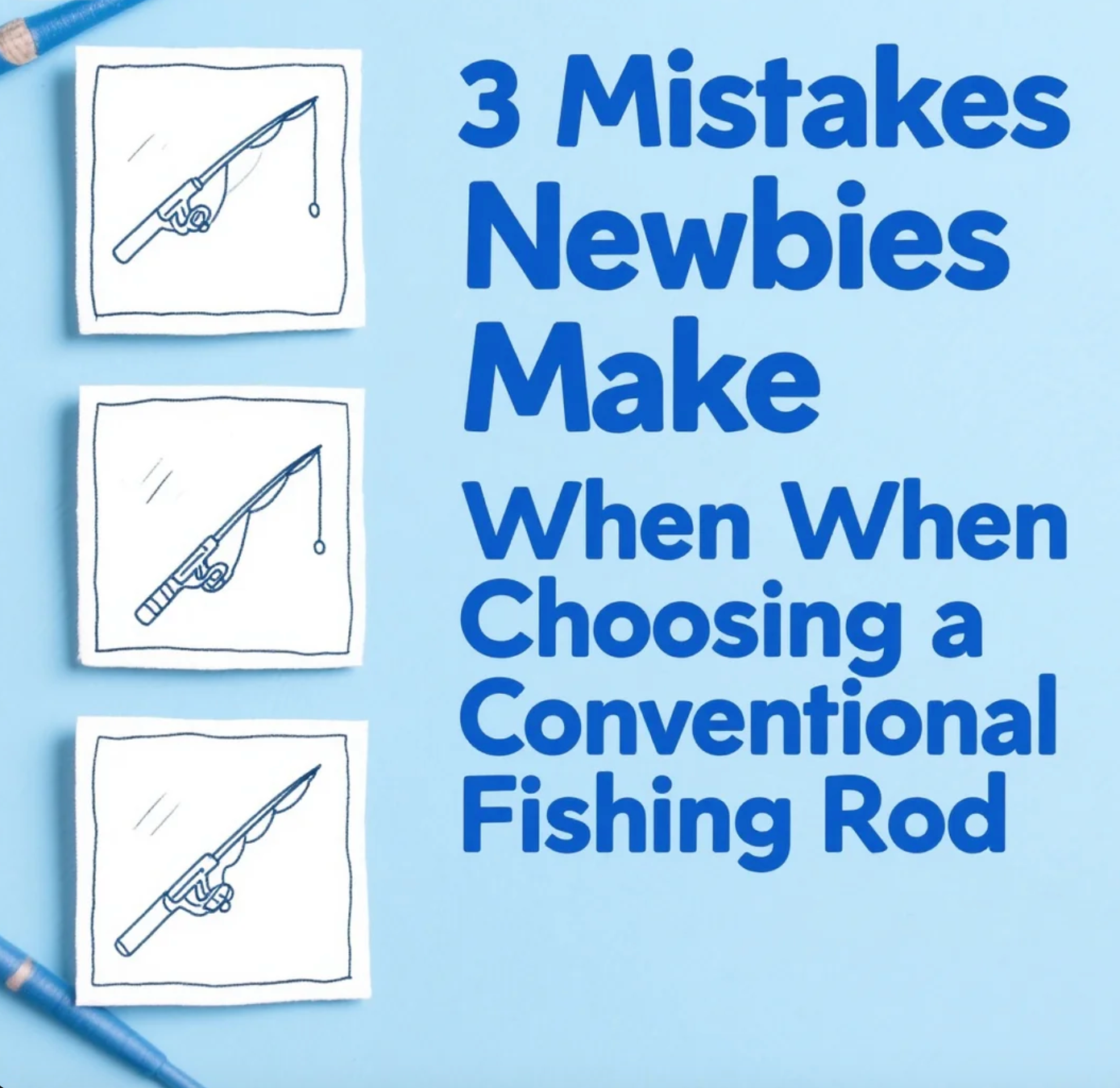🌟 3 Critical Mistakes New Anglers Make When Choosing a Conventional Fishing Rod (Avoid These!)
Whether you’re just dipping your toes into saltwater fishing or dreaming of casting from the surf, picking the right conventional rod is a game-changer. Newbies often stumble into avoidable pitfalls—but fear not! We’re diving into the top 3 errors that sabotage your fishing game, plus pro tips to level up your setup. Let’s reel in knowledge! ⚠️
Mistake #1: Ignoring Rod Length & Action for Your Fishing Style
One of the biggest rookie mistakes? Choosing a rod without matching its length and action to your target species and environment. A 7-foot rod might feel hefty for inshore jigging, while a 9-foot model could lack the sensitivity needed for finicky flats fish.
✅ Pro Tip: Saltwater conventional rods typically range from 6–12 feet. For surf reels (think crashing waves and long casts), opt for a 10–12-footer with a moderate-fast action to handle heavy lures and tough fights. For inshore or pier fishing, a 7–9-footer with a medium action balances control and responsiveness.
Remember: Your rod’s action (fast, medium, slow) dictates how it transfers energy—slow for heavy baits, fast for precision!
Mistake #2: Settling for a Subpar Reel Drag System
Your conventional reel’s drag isn’t just a “set-and-forget” feature—it’s a lifeline during epic battles. New anglers often underestimate the importance of a smooth, corrosion-resistant drag, especially in saltwater. Cheap drags can snap lines, injure fish, or even damage your rod!
🌟 Key Features to Look For:
- Saltwater-specific drag washers (graphite or stainless steel for rust resistance).
- A drag scale marked in pounds (aim for 20% of your line test strength for starters).
- A large arbor spool for faster line retrieval (critical when fighting fast-moving fish like tuna or mackerel).
Pro Hint: If you’re eyeing best saltwater conventional reels, prioritize models with sealed drag systems—they’ll save you from endless maintenance headaches.
Mistake #3: Overlooking Line Guides & Construction Quality
A rod is only as strong as its weakest link—line guides (those little rings that hold your line) are often the unsung heroes. Newbies might skimp on guide material or spacing, leading to line friction, tangles, or even break-offs.
💡 Smart Shopping Guide:
- Guide Material: Look for high-end models with titanium or stainless steel frames (corrosion-proof and lightweight) paired with premium ceramic or silicon carbide inserts (reduces line wear).
- Guide Spacing: Closer guides (every 3–4 inches) on casting rods improve line control; wider spacing works for trolling rods to reduce weight.
- Blank Material: Graphite blanks offer sensitivity, while fiberglass adds backbone—match yours to your target (flounder = flexible graphite; marlin = heavy fiberglass).
Bonus Tip: Don’t Forget the Fishing Line Compatibility!
Your rod’s recommended line rating (e.g., 10–20 lb test) is non-negotiable. Using too light a line risks snapping under pressure, while too heavy a line stifles sensitivity. Cross-reference your reel’s line capacity (max length/weight it can hold) to ensure a perfect pairing.
Final Word: Invest in Quality, Save Time & Frustration
By avoiding these three mistakes, you’ll set yourself up for success whether you’re chasing redfish in the marsh or marlin offshore. Remember: a great conventional rod isn’t just equipment—it’s an extension of your fishing instincts. 💪
Ready to level up your gear? Share your biggest rod-reel struggles in the comments below!











Leave a comment